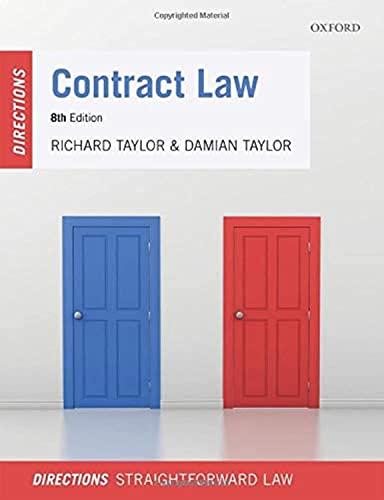Question
Analyze the following paragraph, what are the main key findings. Afterwards, Talk about Indigenous Peoples human rights. And what is the best approach to tackle
Analyze the following paragraph, what are the main key findings. Afterwards, Talk about Indigenous Peoples human rights. And what is the best approach to tackle the situation.
As Abraham Maslow famously stated, "it is tempting, if the only tool you have is a hammer, to treat everything as if it were a nail."180In this Article, we have put forward the argument that the rights-based approachthe hammer, as it werecontains certain structural biases that can affect its operation in sit- uations concerning minority and Indigenous justice. Nevertheless, this is not to say that there are not some occasions that specifically call for a hammer: indeed, even within the CLS movements there have been voices cautioning against throwing the baby out with the rights-skepticism bathwater, notably from the Critical Race Theory camp. A number of CRT scholars have maintained that legal rights are still an important tool for minority groups, even in light of their evident shortcomings and the tendency for such purportedly universal entitlements to preserve the interests of the privileged.181This Article does not adopt a wholly rights-skeptical position.On the contrary, we recognize that in certain situations the interests of Indigenous justice are best served by a rights-based approach, and we offered the Violence Against Women Act of2013as a para- digmatic example of such a success story, although it does urge caution in terms of the apparent myopia engendered by the dominance of the rights paradigm.
While Indigenous peoples should of course take advantage of every tool in the toolbox in order to achieve the aim of justice, not every situation warrants articulation in the language of rights. This is so regardless of whether it is better dealt with outside of the legal system, such as with racist sports franchise names and mascots, like those of the Washington Redskins, where a program of public education is likely to bring more satisfactory and longer-lasting results than one of litigation; whether because a rights-based approach forces the issue's articula- tion in terms or within parameters that cause its distortion; or whether the very adoption of such an approach locks the rights claimants into a form of interac- tion that accords to a logic that is essentially "other."
Importantly, therefore, we are not arguing in favor of either a complete loss of faith in the potential of rights-based approaches to achieve justice for Indige- nous people/s or a complete cessation of any and all recourse to the rhetoric, for a, and power of rights. Instead, we recommend acknowledgment that: first, there is no truth to the idea that rights (or law) are intrinsically a vehicle of so- cial justice; second, rights discourse is not a neutral one but rather comes with its own baggage; and, third, that reliance on rights discourse is a choice that ought to be made on a case-by-case basis. It is vital, therefore, thatin each situa- tionsuch a choice occurs in the full awareness not only that it is a choice but that it ought to be selected on particular grounds and for particular reasons, namely the suitability of its underpinning logic and processes.
Step by Step Solution
There are 3 Steps involved in it
Step: 1

Get Instant Access to Expert-Tailored Solutions
See step-by-step solutions with expert insights and AI powered tools for academic success
Step: 2

Step: 3

Ace Your Homework with AI
Get the answers you need in no time with our AI-driven, step-by-step assistance
Get Started


